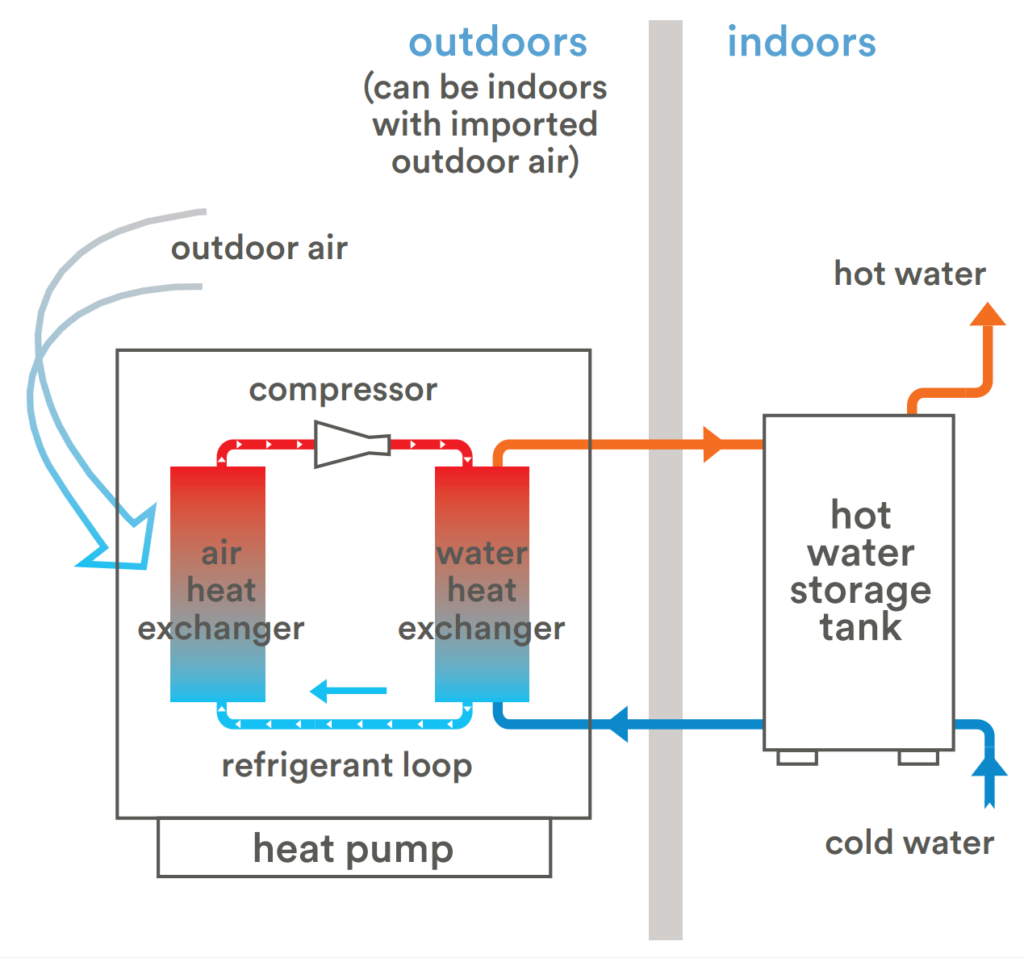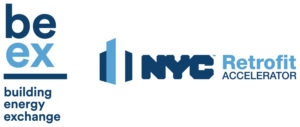Air to Water Heat Pumps (AWHPs)
Air to water heat pumps (AWHPs) are a deep energy retrofit option to electrify a building’s domestic hot water system. By either replacing or supplementing a traditional gas, oil, or steam system, AWHPs can significantly reduce carbon emissions and save energy.
Tech Overview
Applicable Buildings Types hotels, hospitals, all multifamily
When to Implement anytime, at time of equipment replacement
*Be sure to consult a qualified service provider to determine the right measures for your building.
What is an Air to Water Heat Pump?
Air to water heat pumps (AWHPs) are a deep energy retrofit option to electrify a building’s domestic hot water system. Without AWHPs, domestic hot water (DHW) systems are a significant source of carbon emissions and operating expenses, particularly in multifamily buildings, hotels, and dorms. By either replacing or supplementing a traditional gas, oil, or steam system, AWHPs can significantly reduce carbon emissions and save energy.

Fig 1. In AWHPs, heat from outdoor air is drawn into the air heat exchanger and absorbed by a refrigerant. As the refrigerant passes through the compressor, its pressure and temperature rise. The refrigerant then passes through the water heat exchanger to heat the domestic supply water, which is pumped to the storage tank for distribution.
How to Implement
A high-performance AWHP retrofit includes installing heat pump units connected to indoor hot water storage tanks and optimizing the existing piping distribution system. Download the full tech primer to learn more about each of the following steps:
A. Plan System Layout by conducting a review of the building’s existing hot water usage to determine system size and equipment layout
B. Install Heat Pump Unit either indoors or outdoors, and consider the placement and design of water piping connecting the heat pumps to the storage tanks
C. Control Condensate by safely draining condensate that forms on the heat pump coil during summer months and ice melted by the defrost mode during the winter
Cost and Benefits
Cost and benefits of an AWHP retrofit will vary depending on your building’s baseline systems and conditions. Typically, buildings can expect to see the following results:
Greenhouse Gas (GHG) Savings
Converting to an AWHP system can greatly reduce DHW related GHG emissions.
Tenant Experience Improvement
Tenants’ everyday experience will remain largely unchanged, however installing AWHPs will provide residents with reliable and efficient domestic hot water.
Utility Savings
While the current cost of electricity is significantly higher than natural gas, fuel oil, or district steam, heat pump systems are much more efficient than traditional hot water systems, potentially consuming less than half of the amount of energy to provide the same level of heating.
Capital Cost
AWHPs require a moderate capital investment, however incentives are available that may lower up front cost as the market for these technologies grow.
Maintenance Requirement
When installed properly, AWHPs require a moderate level of maintenance involving annual cleaning of heat pumps.
Take Action
This information is part of more than a dozen High Performance Technology Primers prepared by the Building Energy Exchange and the Retrofit Accelerator to introduce decision-makers to solutions that can help them save energy and improve comfort in their buildings. Curious about other retrofitting possibilities? Explore our complete library of Tech Primers here.
The NYC Retrofit Accelerator’s team of Efficiency Advisors offers free, personalized advisory services to help streamline the process of making energy efficient improvements to your buildings.
Get in touch with the NYC Retrofit Accelerator today!
Call (212) 656-9202
Visit nyc.gov/RetrofitAccelerator
Email info @nycretrofit.org
